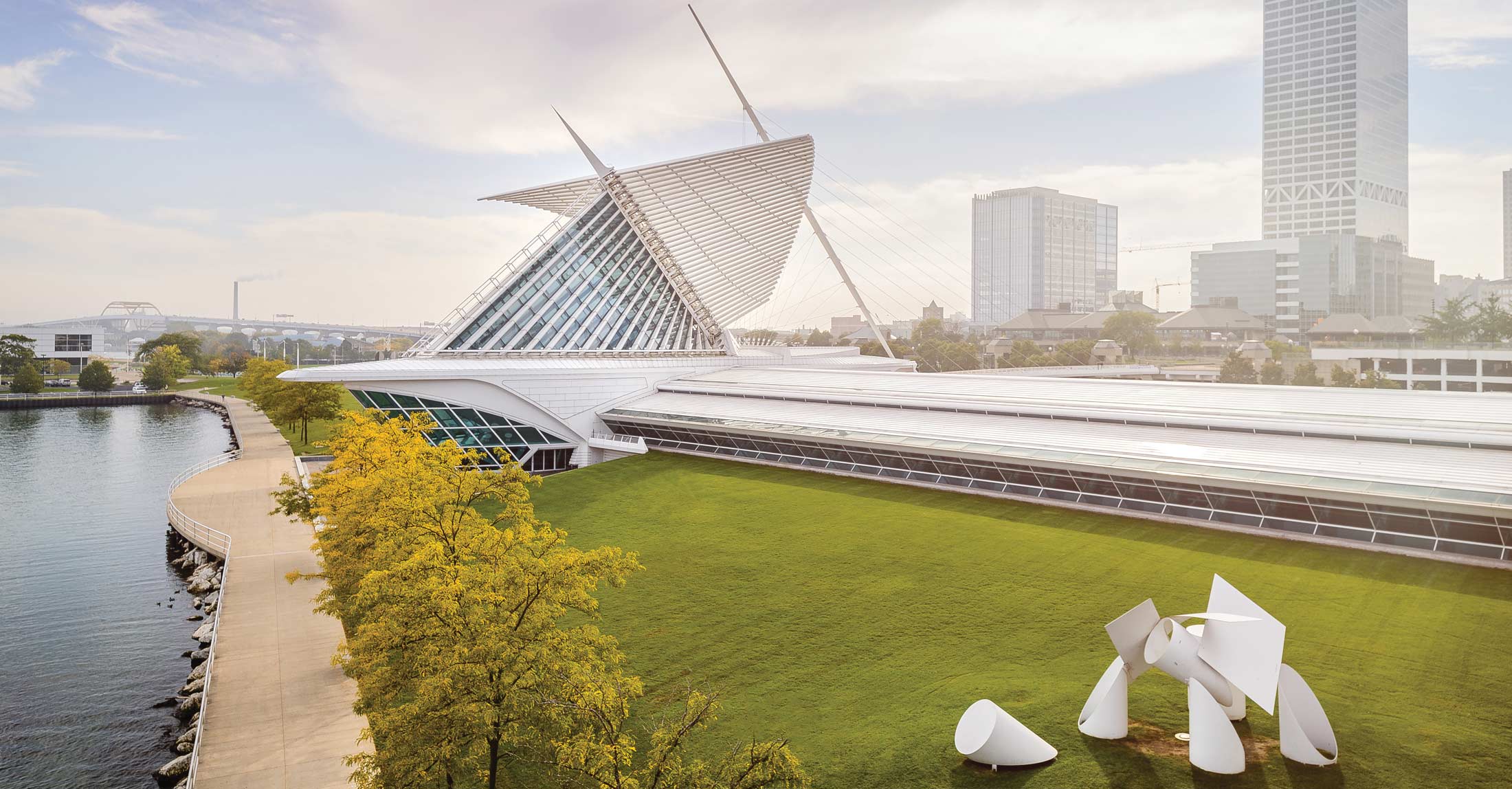
New Milwaukee Art Museum Exhibition Explores the Relationships Between News and Images
Spotlighting the Museum’s collection, True Story: Photography, Journalism, and Media features more than 100 works of art.
MILWAUKEE, WI—September 25, 2024—Drawing from its collection, the Milwaukee Art Museum presents more than 100 objects in the exhibition True Story: Photography, Journalism, and Media, demonstrating how photographers and artists have understood and wielded the power of images to convey the events of our world. Featuring artworks from the 20th and 21st centuries, the exhibition will be on view November 15, 2024–March 16, 2025, in the Museum’s Herzfeld Center for Photography and Media Arts.
“Highlighting artworks significant to the Museum’s collection and the history of photojournalism, True Story demonstrates how images have had the power to shape the way we understand the events of our time,” said Elizabeth Siegel, chief curator at the Milwaukee Art Museum.

True Story invites us to assess how we produce, consume, and understand photographs and their narratives. The exhibition’s accompanying looking guide directs audiences to pay attention to an image’s context and consider its creator’s motivations, highlighting the nuances of photography and the significance of media literacy. Demonstrating the strength of the Museum’s documentary photography holdings, the exhibition features treasures of the collection—photographs, magazines, collages, and a film—by pioneering photographers and artists in a three-part presentation.
The exhibition begins with “One Small Frame,” a section devoted to single images that show the complexities of news events distilled to a singular moment. Taken by celebrated photographers like Robert Capa and Eugene Smith as well as unidentified image makers at Wisconsin News and Associated Press, each work captures the entirety of one news story—a car crash, a parade, a march, a Packers game.
The field-defining photojournalists featured in “A Unified Thread,” including Lewis Wickes Hine, Wayne Miller, Danny Lyon, and Larry Burrows, used multiple images to create the narratives of the news they covered. Hine, for example, collaborated with the National Child Labor Committee to expose the working conditions of young children in textile mills, advocating for labor law reform. Lyon documented the civil rights activists of the Student Nonviolent Coordinating Committee, using photography’s power to inspire action. Whether pursuing their own interests or working on assignment for a publication, these photographers shared the news through in-depth series of images.
The artists featured in “Media Messages” reflect on and critique the role photographic images play in the media landscape at large. In Redheaded Peckerwood (2005–2011), Wisconsin-born artist Christian Patterson considers the media’s role in shaping crime reporting, focusing on a 1955 murder spree that presages the modern-day interest in true crime. Early works by William Weege, renowned printmaker and founder of Tandem Press in Madison, use collaged magazine photographs to indict the Vietnam War. Alongside pieces by Patterson and Weege are works by artists Bruce Conner, Taryn Simon, and Robert Heinecken, who bring attention to how the “truths” of photography can be misused and subverted.
“True Story provides a glimpse into the long relationship between news and photography,” said the exhibition’s curator Ariel Pate, assistant curator of photography at the Milwaukee Art Museum. “As the media landscape continues to grow and evolve, I hope our visitors gain an appreciation for media literacy as a crucial skill.”
Among the notable works featured in True Story are:
- Untitled, from the series Are You Rea, by Robert Heinecken, 1964–68, juxtaposes a Life magazine cover of former President Johnson with an advertisement on the reverse;
- Why this Double Standard? by Lewis Wickes Hine, ca. 1913, compares the working conditions of a Northern and Southern cotton mill, both of which are owned by the same corporation, to illustrate the impact of public opinion on labor practices; and
- And Now to Flowers for War! by William Weege, 1968, combines three images in the silhouette of a combat helmet.
The exhibition opens just three weeks after Robert Longo: The Acceleration of History—an exhibition by the renowned artist whose career has been dedicated to exploring the effects of our image-saturated culture. Both standalone presentations, True Story and Robert Longo can provide audiences with context to the other, as both address our consumption of mass media images.
True Story: Photography, Journalism, and Media was curated by Ariel Pate, assistant curator of photography at the Milwaukee Art Museum. Programming for the exhibition includes a two-day World AIDS Day Commemoration, a Haberman Local Luminaries program, a suite of Gallery Talks, and more.
Sponsors
Leadership sponsor
Milwaukee Art Museum’s Friends of Art
Supporting sponsor
Phillip and Edith Leonian Foundation
Exhibitions in the Herzfeld Center for Photography and Media Arts are sponsored by
Herzfeld Foundation
The Milwaukee Art Museum extends its sincere thanks to the Visionaries.
Mark and Debbie Attanasio
Donna and Donald Baumgartner
Murph Burke
Joel and Caran Quadracci
Sue and Bud Selig
Jeff and Gail Yabuki
About the Milwaukee Art Museum
The Milwaukee Art Museum is an essential destination for art and architecture and a vital cultural resource that connects visitors to dynamic art experiences and one another. Housed in iconic buildings by Santiago Calatrava, Eero Saarinen, and David Kahler on a 24-acre lakefront campus, the Museum is Wisconsin’s largest art institution and home to both broad and deep collections, with exceptional holdings in American painting, sculpture, and decorative arts; conceptual and minimalist art; prints and drawings; European art from the Renaissance through the nineteenth century; photography and new media; modern and contemporary design; folk and self-taught art; and twentieth-century Haitian art. A bold symbol of Milwaukee’s ambition and forward-thinking vision, the Museum is a place for community building, education, and celebration that fosters creativity, free speech, and critical discourse for audiences of all ages and backgrounds. For more information, visit mam.org.
Media Contact
For more information, please contact:
Cortney Heimerl / Lindsey Wurz
Milwaukee Art Museum
communications@mam.org
414-940-0490 / 414-224-3865
